Shelf Confidence: Bridging the Gap Between Personality and Style

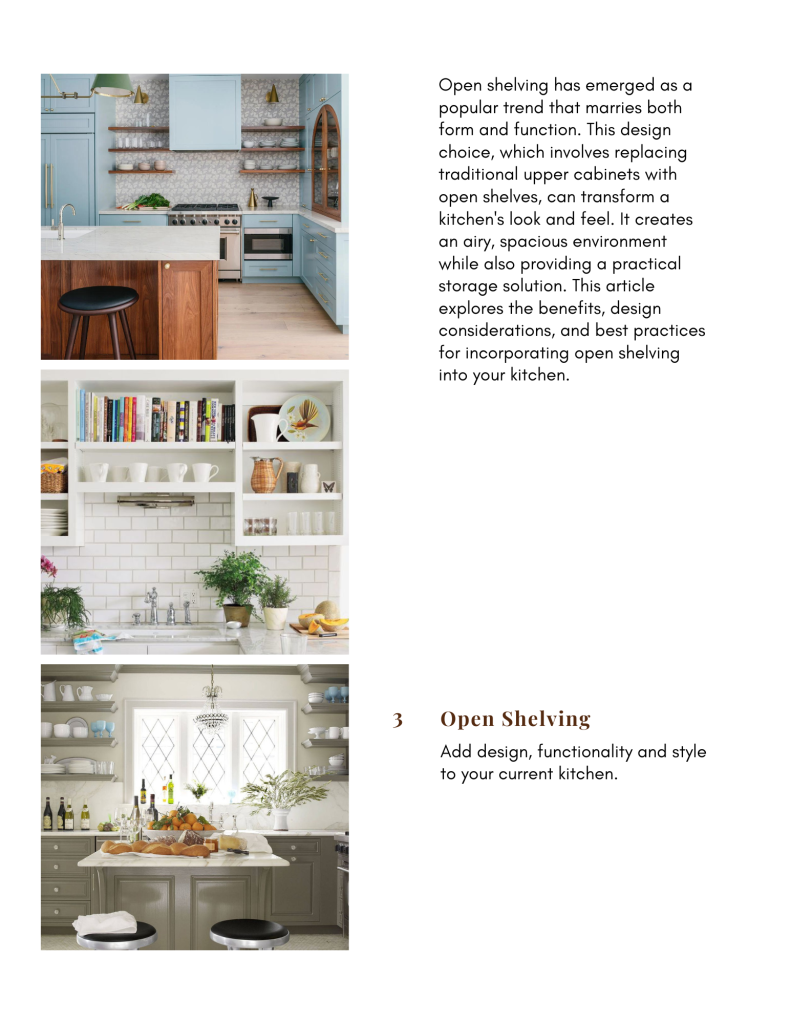
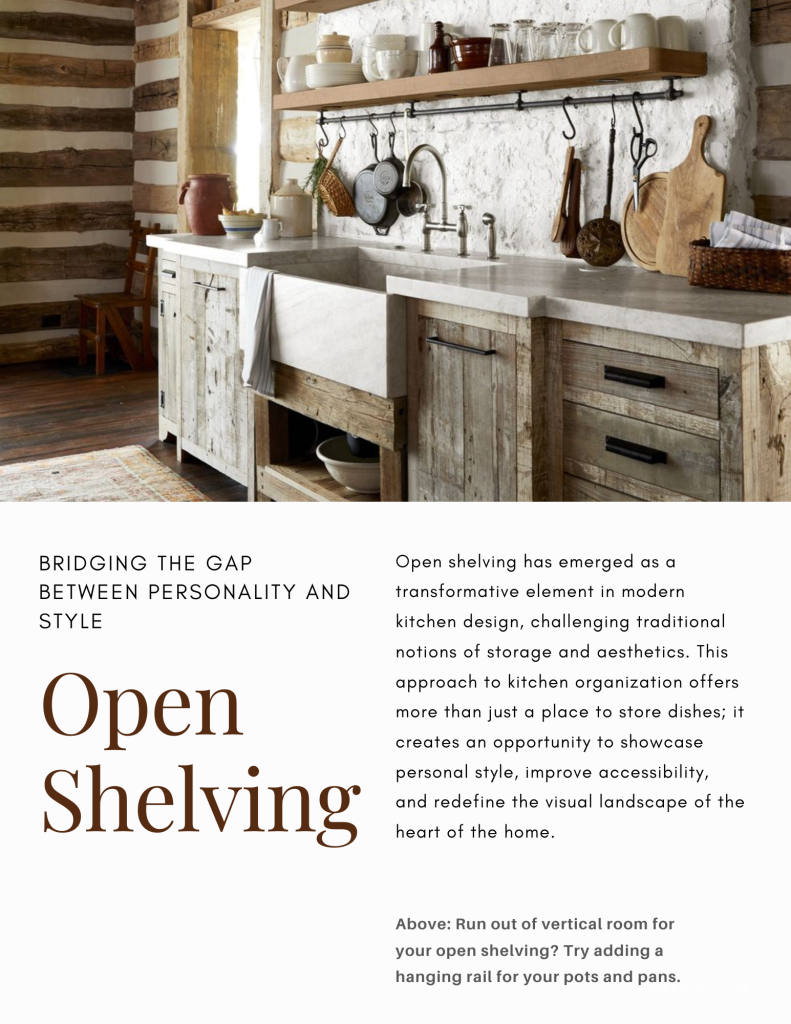
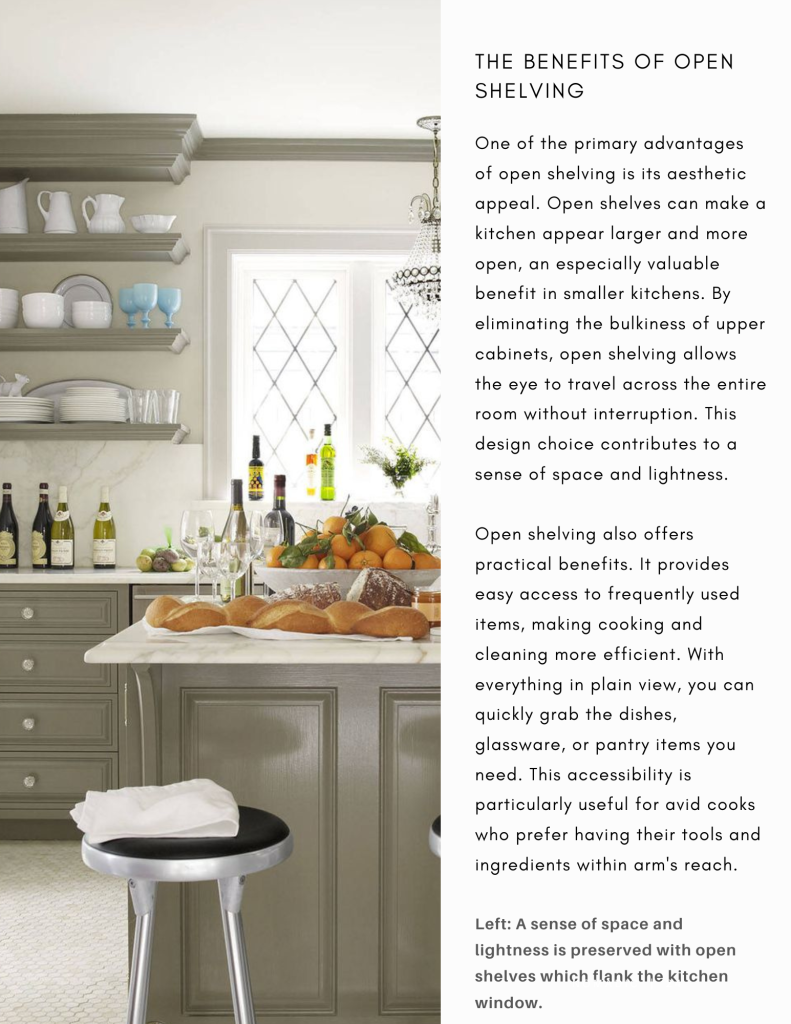
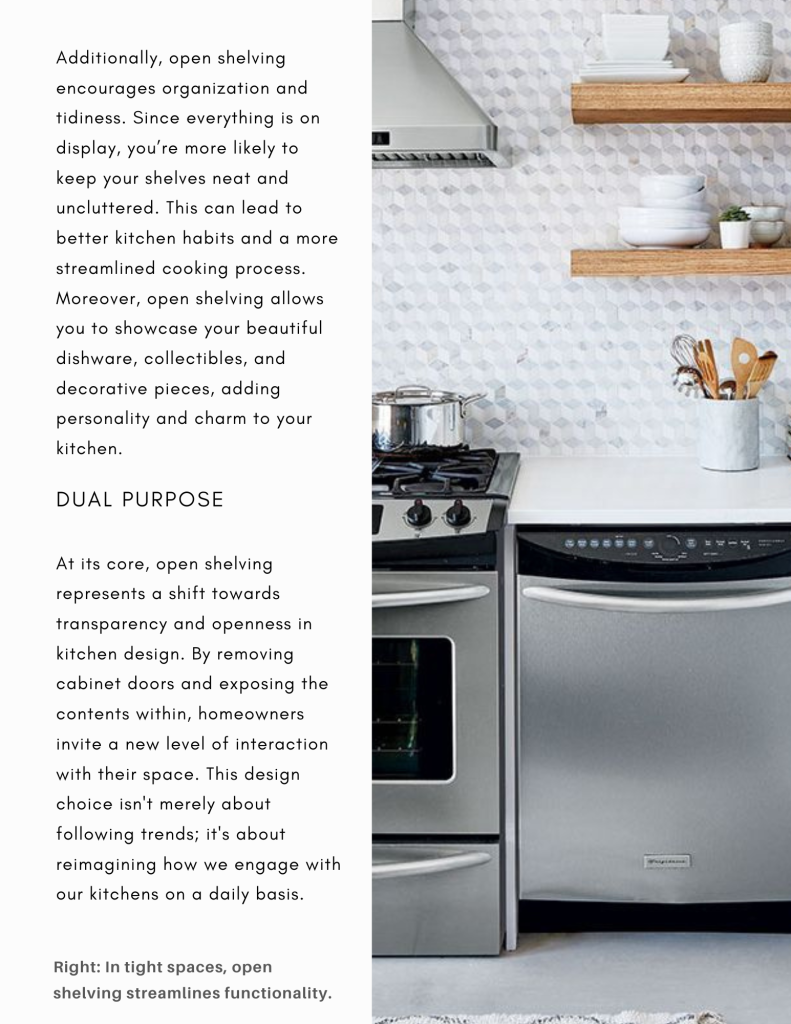
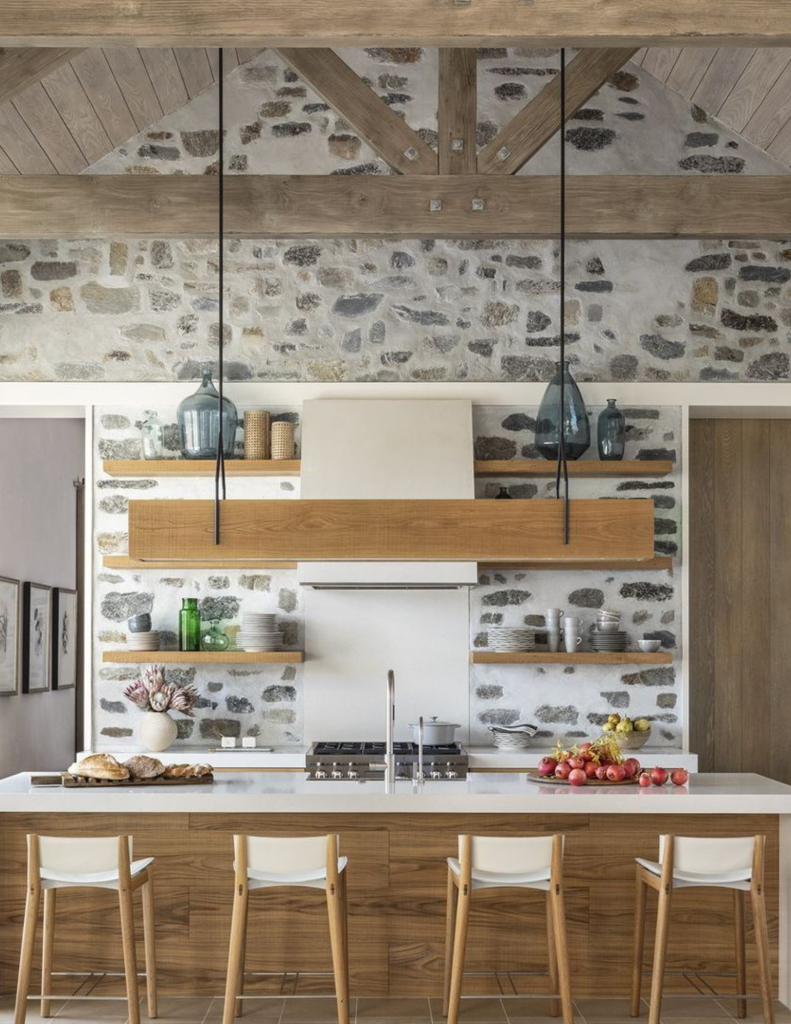

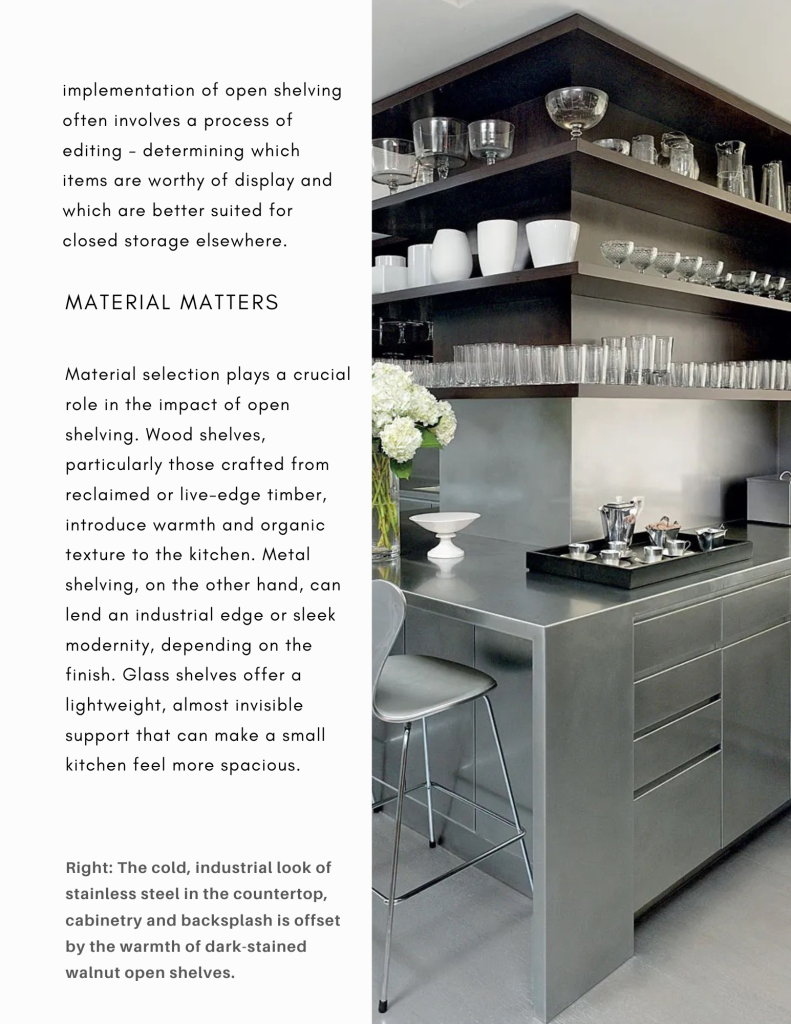


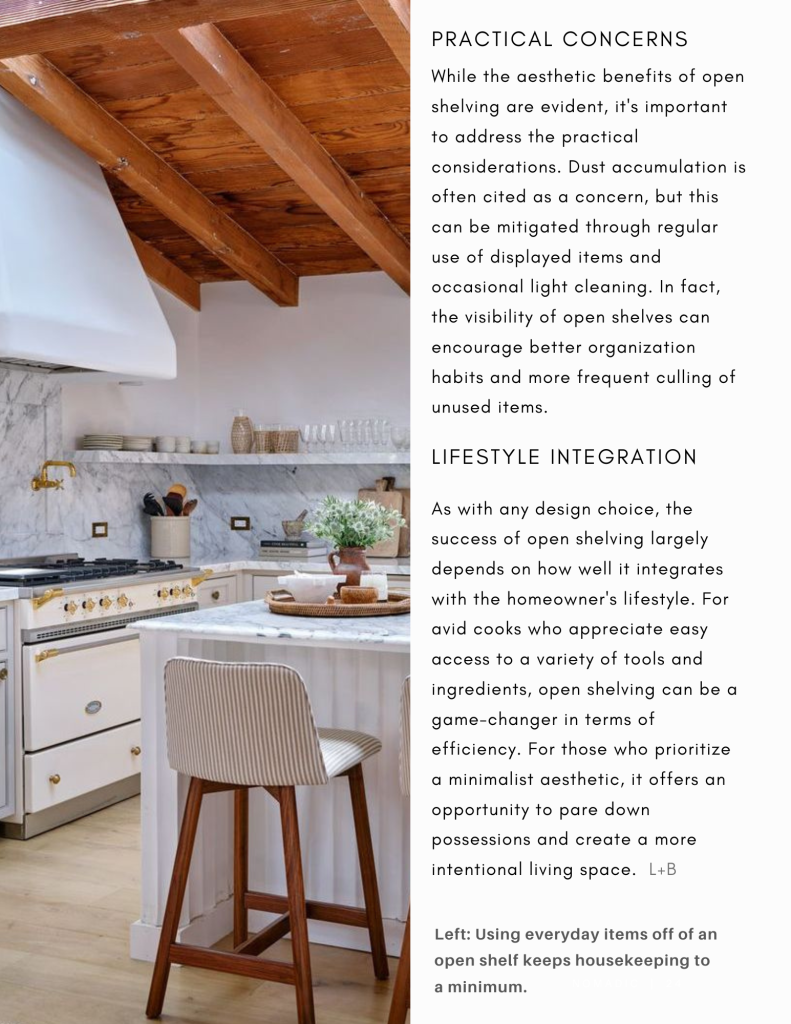
Complete Article Text:
Open Shelving: Bridging the Gap Between Personality and Style
Open shelving has emerged as a transformative element in modern kitchen design, challenging traditional notions of storage and aesthetics. This approach
to kitchen organization offers more than just a place to store dishes; it creates an opportunity to showcase personal style, improve accessibility, and redefine the visual landscape of the heart of the home.
The Benefits of Open Shelving
One of the primary advantages of open shelving is its aesthetic appeal. Open shelves can make a kitchen appear larger and more open, an especially valuable benefit in smaller kitchens. By eliminating the bulkiness of upper cabinets, open shelving allows the eye to travel across the entire room without interruption. This design choice contributes to a sense of space and lightness.
Open shelving also offers practical benefits. It provides easy access to frequently used items, making cooking and cleaning more efficient. With everything in plain view, you can quickly grab the dishes, glassware, or pantry items you need. This accessibility is particularly useful for avid cooks who prefer having their tools and ingredients within arm’s reach.
Additionally, open shelving encourages organization and tidiness. Since everything is on display, you’re more likely to keep your shelves neat and uncluttered. This can lead to better kitchen habits and a more streamlined cooking process. Moreover, open shelving allows you to showcase your beautiful dishware, collectibles, and decorative pieces, adding personality and charm to your kitchen.
Dual Purpose
At its core, open shelving represents a shift towards transparency and openness in kitchen design. By removing cabinet doors and exposing the contents within, homeowners invite a new level of interaction with their space. This design choice isn’t merely about following trends; it’s about reimagining how we engage with our kitchens on a daily basis.
The appeal of open shelving lies in its dual nature as both a functional storage solution and a design statement. Practically speaking, open shelves offer immediate access to frequently used items, streamlining cooking processes and encouraging a more intuitive use of kitchen tools and ingredients.
From a design perspective, they provide a canvas for personal expression, allowing homeowners to curate displays that reflect their tastes and lifestyles.
The Transition
However, the transition to open shelving requires thoughtful consideration. It’s not simply a matter of removing cabinet doors; it necessitates a reevaluation of storage habits and a commitment to organization. Successful implementation of open shelving often involves a process of editing – determining which items are worthy of display and which are better suited for closed storage elsewhere.
Material Matters
Material selection plays a crucial role in the impact of open shelving. Wood shelves, particularly those crafted from reclaimed or live-edge timber, introduce warmth and organic texture to the kitchen. Metal shelving, on the other hand, can lend an industrial edge or sleek modernity, depending on the finish. Glass shelves offer a lightweight, almost invisible support that can make a small kitchen feel more spacious.
The Art of Arrangement
The arrangement of open shelves is equally important. Symmetry can create a sense of order and calm, while a more eclectic arrangement might better suit a bohemian or eclectic kitchen style. The spacing between shelves should be considered not just for aesthetic reasons, but for practical ones as well, ensuring that taller items can be accommodated without awkwardness.
Color and Coordination
Color coordination on open shelves can dramatically influence the overall feel of the kitchen. A monochromatic display of white dishes against a white wall can create a serene, spa-like atmosphere. Conversely, a vibrant mix of colorful ceramics can inject energy and personality into the space. The key is to strike a balance that feels harmonious with the rest of the kitchen’s design elements.
Flexibility and Evolution
One of the unique advantages of open shelving is its ability to evolve with changing tastes and seasons. Unlike closed cabinets, which conceal their contents, open shelves invite regular restyling. This flexibility allows homeowners to refresh their kitchen’s look simply by rearranging items or swapping out display pieces, offering a cost-effective way to update the space’s ambiance.
Practical Concerns
While the aesthetic benefits of open shelving are evident, it’s important to address the practical considerations. Dust accumulation is often cited as a concern, but this can be mitigated through regular use of displayed items and occasional light cleaning. In fact, the visibility of open shelves can encourage better organization habits and more frequent culling of unused items.
Lifestyle Integration
As with any design choice, the success of open shelving largely depends on how well it integrates with the homeowner’s lifestyle. For avid cooks who appreciate easy access to a variety of tools and ingredients, open shelving can be a game-changer in terms of efficiency. For those who prioritize a minimalist aesthetic, it offers an opportunity to pare down possessions and create a more intentional living space.
